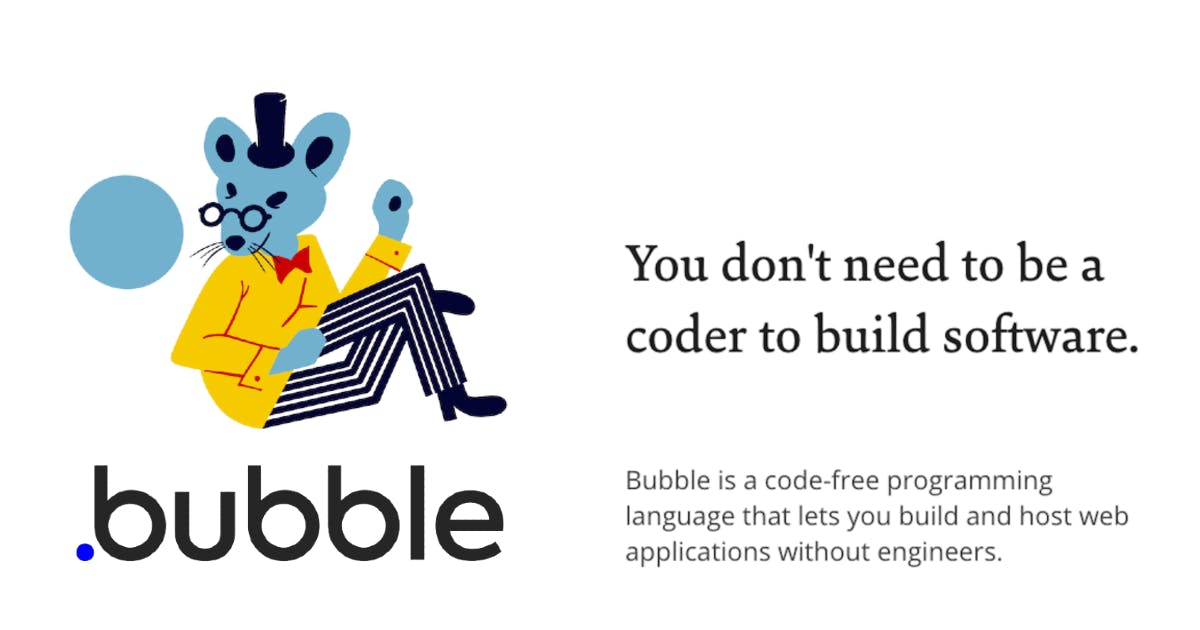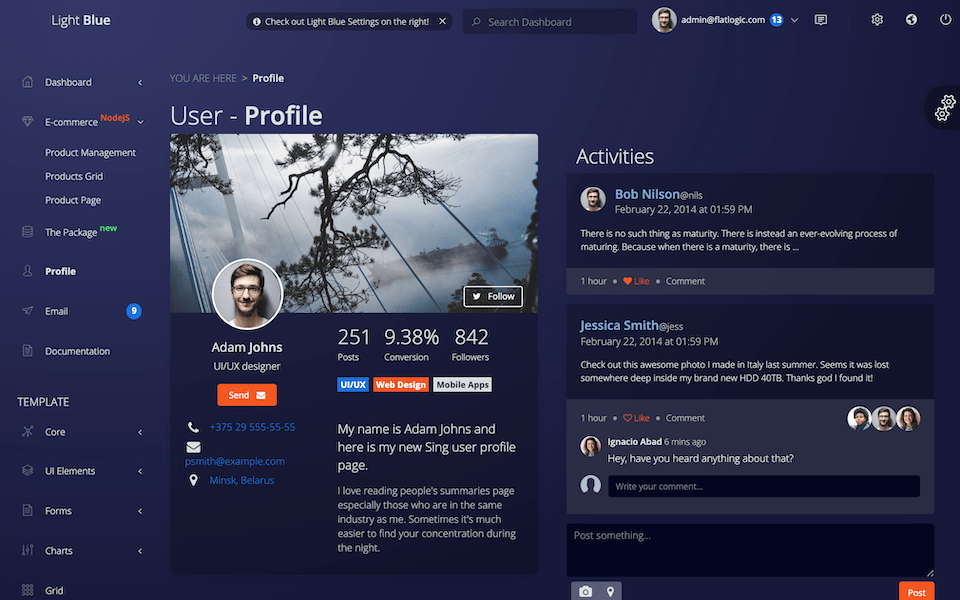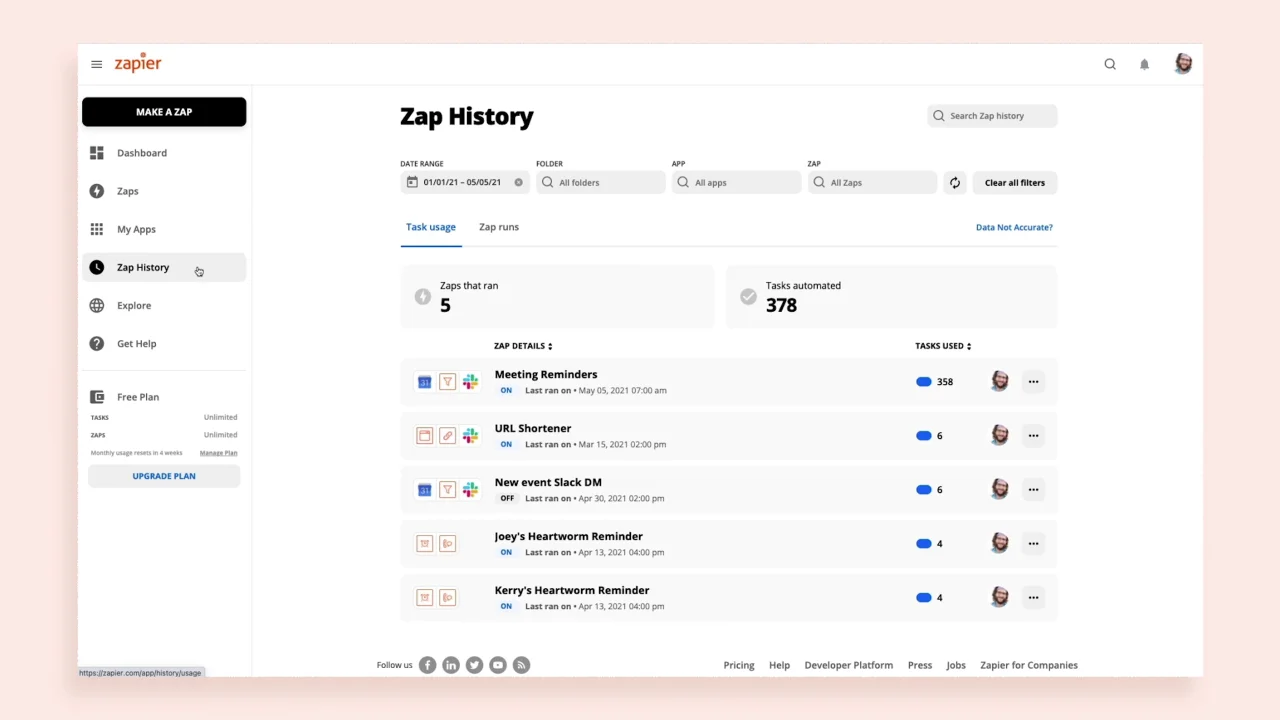In the fast-paced world of small business management, efficiency and adaptability are key drivers of success. Small business owners often juggle numerous responsibilities, from customer management to marketing and daily operations. This is where no-code tools like FlutterFlow come into play—offering an easy way to streamline tasks and innovate without the need for coding skills.
FlutterFlow empowers small businesses to create apps, automate workflows, and improve operations without writing a single line of code. Whether you’re a solopreneur, a growing startup, or an established business, leveraging a tool like FlutterFlow can transform your processes, enhance customer engagement, and fuel growth.
In this article, we explore FlutterFlow and its features, comparing it to other top platforms, to help you find the perfect no-code solution to meet your small business needs. Whether you’re looking to automate tasks, build custom apps, or manage operations more effectively, FlutterFlow provides a robust, user-friendly way to innovate and thrive—no coding required.
What Is the Best No-Code Tool for Small Businesses?
No-code tools have revolutionized the way small businesses approach app development and workflow automation. These platforms allow business owners and teams to create powerful, customized solutions without requiring programming skills or hiring expensive development resources. But with so many options on the market, how do you identify the best no-code tool for your small business?
The “best” no-code tool depends on your specific needs, such as app-building, process automation, or website development. For example, FlutterFlow excels at creating visually stunning mobile and web applications with a drag-and-drop interface, seamless integrations, and exportable code for advanced customization. Platforms like Bubble focus on building robust web apps, while tools like Zapier specialize in automating workflows by connecting various apps and services.
When choosing a no-code tool, consider factors such as scalability, ease of use, customer support, and cost. Also, look for features that align with your business goals—whether that’s improving customer engagement, streamlining operations, or launching a new digital product. By identifying your needs and exploring the strengths of different platforms, you can confidently select the ideal no-code tool to drive your business forward.
Why Use No-Code Tools for Small Businesses?
For small businesses, time and resources are often limited, making efficiency and cost-effectiveness crucial. No-code tools provide an accessible solution, enabling businesses to create and deploy digital products, automate repetitive tasks, and optimize workflows without the overhead of traditional development.
One of the key benefits of no-code tools is their simplicity. These platforms feature intuitive interfaces and pre-built templates, allowing even non-technical users to create apps and systems tailored to their unique needs. This means small business owners can quickly adapt to changing market conditions, launch new products, or improve internal processes without waiting on lengthy development cycles.
And bear in mind that…
No-code tools are cost-effective. They eliminate the need to hire a development team or invest in complex software, making them an attractive option for businesses operating on tight budgets. By using no-code solutions, small businesses can focus their resources on growth and innovation.
No-code tools promote collaboration within teams. With drag-and-drop editors and visual workflows, team members across departments can contribute to app design and functionality, ensuring the final product meets business objectives.
No-code tools empower small businesses to innovate faster, reduce costs, and stay competitive in today’s digital landscape. Whether you’re looking to streamline operations, engage with customers more effectively, or explore new revenue streams, adopting no-code tools is a smart move for small business success.
Top No-Code Alternatives to FlutterFlow for Small Businesses
While FlutterFlow is a powerful tool for creating visually appealing apps, several other no-code platforms offer unique features tailored to different needs. Here are some top alternatives:
- Flatlogic: Ideal for businesses seeking a combination of app development and data-driven solutions. Flatlogic stands out by enabling users to create full-stack web applications with integrated databases, making it a strong choice for data-intensive projects.
- Bubble: Perfect for building complex web apps with powerful backend functionalities and a visual drag-and-drop editor. Ideal for businesses focused on SaaS or online services.
- Adalo: A user-friendly platform for creating mobile apps with pre-built templates and seamless integrations, great for startups aiming for quick app launches.
- Thunkable: Known for its flexibility in developing cross-platform mobile apps. It’s a go-to choice for small businesses seeking an intuitive app-building experience.
- Webflow: While primarily a web design tool, Webflow also enables small businesses to create custom websites with minimal effort, making it an excellent choice for e-commerce or content-driven businesses.
- Zapier: Specializes in automating workflows by connecting various apps and tools, allowing small businesses to streamline operations effortlessly.
Bubble

Why You Have to Consider Bubble as a No-Code Tool for Your Business
Bubble is one of the most popular no-code platforms available today, offering unparalleled flexibility for building complex web applications. Its powerful visual editor allows users to design, develop, and launch fully functional web apps without writing a single line of code. Whether you’re looking to create a SaaS product, an e-commerce platform, or an internal business tool, Bubble provides the features and scalability needed to bring your vision to life.
Bubble Pros
- Highly Customizable: Bubble offers a flexible drag-and-drop interface for designing custom web applications that look and function exactly as you envision.
- Robust Backend Integration: Build powerful workflows and integrate with APIs to create dynamic, data-driven applications.
- Scalability: Bubble’s architecture supports scalability, making it a great option for growing businesses.
- Comprehensive Marketplace: Access pre-built templates, plugins, and integrations to accelerate your app-building process.
- Community Support: A large and active community provides forums, tutorials, and resources to help users succeed.
Bubble Cons
- Steep Learning Curve: While no coding is required, Bubble’s feature-rich platform can be overwhelming for beginners.
- Performance Limitations: Apps with heavy workflows or data processing can experience slower performance without optimization.
- Web-Focused: Bubble is designed primarily for web applications, limiting its utility for businesses looking to build native mobile apps.
- Pricing Tiers: While Bubble has a free plan, its advanced features and scalability are locked behind higher-priced subscriptions, which may not suit smaller budgets.
What Makes Bubble the Best No-Code Tool for Small Businesses
Bubble excels at enabling small businesses to build powerful, custom web applications tailored to their unique needs. Its extensive feature set, including API integrations, dynamic workflows, and a robust backend, makes it ideal for businesses that require more than basic app-building functionality. Unlike simpler platforms, Bubble empowers users to create truly unique and complex applications, whether they’re targeting customers, managing operations, or launching new services.
Bubble’s scalability ensures that the apps you build can grow alongside your business, making it a future-proof solution. Additionally, its active community and ecosystem of templates and plugins make it easier for small businesses to find the resources they need to succeed. If your business relies heavily on web-based solutions and values customization and flexibility, Bubble is a top choice in the no-code market.
Flatlogic

Why You Have to Consider Flatlogic as a No-Code Tool for Your Business
Flatlogic is a no-code platform designed to help businesses create full-stack web applications quickly and efficiently. Its unique offering includes a combination of front-end, back-end, and database generation, making it a comprehensive solution for small businesses looking to build custom apps without the complexity of traditional coding. Whether you’re managing data-heavy operations or looking to launch a scalable app, Flatlogic empowers you with tools to build reliable and modern applications tailored to your needs.
Flatlogic Pros
- Full-Stack Capabilities: Flatlogic generates front-end, back-end, and database layers seamlessly, saving time and effort.
- Customizable Templates: Offers a wide range of pre-built app templates, which can be modified to suit specific business requirements.
- Database Integration: Simplifies the process of managing and connecting databases, a crucial feature for data-driven projects.
- Scalability: Applications built with Flatlogic are scalable, ensuring they grow with your business needs.
- Developer-Friendly Features: While designed for no-code use, it also supports exporting code for advanced customization by developers.
Flatlogic Cons
- Steeper Learning Curve: Compared to simpler no-code platforms, Flatlogic might feel more complex for non-technical users.
- Limited Mobile Focus: Flatlogic primarily targets web app development, which may not be ideal for businesses focused solely on mobile apps.
- Pricing: While offering robust features, Flatlogic’s pricing might be higher compared to other no-code tools, making it less accessible for very small businesses with limited budgets.
What Makes Flatlogic the Best No-Code Tool for Small Businesses
Flatlogic stands out as an excellent choice for small businesses that require more than basic app-building functionalities. Its ability to generate full-stack applications is particularly beneficial for companies handling extensive data or requiring robust backend capabilities. Unlike many no-code tools that focus solely on front-end design, Flatlogic offers a holistic development approach, ensuring your app is functional, scalable, and ready for growth.
Additionally, its blend of no-code simplicity with developer-friendly features makes it a versatile platform that bridges the gap between ease of use and technical sophistication. For small businesses seeking a reliable, future-proof solution for their app development needs, Flatlogic provides the perfect balance of power, flexibility, and customization.
Adalo

Why You Have to Consider Adalo as a No-Code Tool for Your Business
Adalo is a no-code platform tailored for creating mobile and web applications with ease. It’s an excellent option for small businesses aiming to quickly launch apps for internal processes, customer engagement, or e-commerce without requiring technical expertise. With its user-friendly drag-and-drop editor and built-in components, Adalo allows you to design visually appealing, functional apps in record time, making it a great choice for entrepreneurs and small teams looking for efficiency and simplicity.
Adalo Pros
- User-Friendly Interface: Adalo’s drag-and-drop editor is intuitive and accessible, even for users with no prior app development experience.
- Mobile-First Approach: Ideal for building mobile apps, with features optimized for iOS and Android platforms.
- Pre-Built Components: Offers a library of pre-built components, including forms, lists, and buttons, to accelerate the app development process.
- Seamless Publishing: Allows direct publishing of apps to the Apple App Store and Google Play, streamlining the launch process.
- Affordable Pricing: Adalo’s pricing structure is budget-friendly, making it accessible for startups and small businesses.
Adalo Cons
- Limited Scalability: Adalo is best suited for smaller projects and may not handle large-scale, complex applications effectively.
- Performance Issues: Apps with heavy data usage or complex workflows may experience slower performance.
- Customization Constraints: While great for basic apps, it offers fewer advanced customization options compared to platforms like Bubble or FlutterFlow.
- Dependency on Platform: Adalo’s closed ecosystem can limit code export, reducing flexibility if you wish to scale or migrate your app to another platform.
What Makes Adalo the Best No-Code Tool for Small Businesses
Adalo stands out as a top choice for small businesses looking to develop mobile apps quickly and affordably. Its mobile-first approach and direct publishing capabilities simplify the app development and deployment process, enabling businesses to reach their audience faster. The platform’s pre-built components and intuitive interface make it especially appealing to non-technical users who need functional apps without a steep learning curve.
While it may not be ideal for highly complex or large-scale projects, Adalo’s affordability, ease of use, and focus on mobile solutions make it an excellent tool for small businesses seeking to engage customers, manage operations, or launch innovative app-based services. If your business values speed, simplicity, and mobile functionality, Adalo is a practical and reliable no-code.
Thunkable

Why You Have to Consider Thunkable as a No-Code Tool for Your Business
Thunkable is a powerful no-code platform for creating cross-platform mobile apps that run seamlessly on both iOS and Android. Its drag-and-drop interface allows users to design and customize apps visually, while its extensive functionality enables businesses to build apps with advanced features like APIs, animations, and responsive layouts. Thunkable is ideal for small businesses looking to deliver native app experiences without the complexities of traditional development.
Thunkable Pros
- Cross-Platform Development: Create apps that work on both iOS and Android from a single build.
- Advanced Features: Supports complex features such as APIs, animations, and geolocation.
- User-Friendly Interface: Drag-and-drop editor makes app development accessible to non-technical users.
- Real-Time Testing: Test apps instantly on devices or simulators, speeding up the development process.
- Community and Resources: Extensive tutorials, templates, and an active community for support.
Thunkable Cons
- Limited Web App Support: Focuses on mobile apps, making it less ideal for web app development.
- Performance Limitations: Apps with heavy logic or extensive workflows may experience performance issues.
- Pricing: Advanced features and higher-level plans can be expensive for very small businesses.
What Makes Thunkable the Best No-Code Tool for Small Businesses
Thunkable is perfect for small businesses focused on building mobile apps with advanced features and broad compatibility. Its cross-platform capabilities ensure cost-efficiency, while its intuitive interface makes app development straightforward. If your business prioritizes mobile app delivery and requires robust features, Thunkable is a strong contender.
Webflow

Why You Have to Consider Webflow as a No-Code Tool for Your Business
Webflow is a leading no-code platform for designing and building responsive websites. Unlike traditional website builders, Webflow gives users complete design freedom while maintaining a visual interface. It’s a great tool for small businesses that need professional, high-performance websites without relying on developers. Webflow’s hosting and CMS integrations make it a complete solution for creating and managing web content.
Webflow Pros
- Full Design Control: Enables pixel-perfect customization for unique website designs.
- Responsive Design: Automatically adjusts for desktops, tablets, and mobile devices.
- Built-In Hosting: Simplifies website management with fast, reliable hosting.
- CMS Features: Ideal for content-heavy websites, with easy editing and organization tools.
- SEO-Friendly: Offers advanced SEO settings to improve search engine visibility.
Webflow Cons
- Steeper Learning Curve: Its flexibility comes with complexity, which can be challenging for beginners.
- Higher Costs: Hosting and advanced features can make it pricier than basic website builders.
- No Native Mobile Apps: Focuses solely on web design, limiting its use for mobile app development.
What Makes Webflow the Best No-Code Tool for Small Businesses
Webflow is an excellent choice for businesses that need a professional, high-quality website. Its design flexibility and built-in hosting make it a complete package for small businesses aiming to establish a strong online presence. If your business values unique branding, responsive designs, and SEO performance, Webflow is a top-tier solution.
Zapier

Why You Have to Consider Zapier as a No-Code Tool for Your Business
Zapier specializes in automating workflows by connecting your favorite apps and services. It helps small businesses save time and improve productivity by automating repetitive tasks like data entry, notifications, and file management. Zapier’s “Zaps” (automated workflows) allow you to integrate apps without needing coding skills, making it a must-have tool for streamlining operations.
Zapier Pros
- Wide App Integration: Connects with thousands of popular apps, including Google Workspace, Slack, and Shopify.
- Customizable Workflows: Allows businesses to create tailored automation to suit their needs.
- Ease of Use: Simple setup with no coding required, making it accessible to anyone.
- Time-Saving: Automates repetitive tasks, allowing teams to focus on more important work.
- Scalability: Can handle complex, multi-step workflows as businesses grow.
Zapier Cons
- Limited Free Plan: The free plan offers basic functionality, with advanced features requiring a paid subscription.
- Learning Curve for Complex Workflows: Setting up multi-step Zaps may require some experimentation.
- Dependent on Third-Party APIs: Relies on the availability and reliability of connected apps.
What Makes Zapier the Best No-Code Tool for Small Businesses
Zapier is indispensable for small businesses looking to automate workflows and improve operational efficiency. Its ability to integrate multiple apps and services ensures seamless communication and data flow across platforms. Whether you’re managing marketing, sales, or customer support, Zapier enables you to save time, reduce errors, and scale your processes effortlessly. If automation and integration are key priorities, Zapier is the go-to no-code tool for your business.
No-Code Tools for Small Businesses: Are They Worth the Investment?
For small businesses, every dollar and every minute counts. No-code tools offer an incredible opportunity to save both by simplifying processes, enabling innovation, and reducing dependency on costly development resources. From building mobile and web apps to automating workflows and creating stunning websites, no-code platforms empower businesses to achieve more with less effort.
The true value of no-code tools lies in their accessibility and scalability. They allow non-technical users to turn ideas into reality and adapt quickly to market changes. While the initial investment in premium plans or advanced features might seem significant, the long-term benefits—like increased efficiency, enhanced customer engagement, and reduced operational costs—often outweigh the expense.
However, no-code tools aren’t a one-size-fits-all solution. Their worth depends on your business needs, goals, and the specific platform you choose. It’s essential to evaluate the features, pricing, and limitations of tools like FlutterFlow, Bubble, Flatlogic, Adalo, Thunkable, Webflow, and Zapier to ensure they align with your objectives.
In most cases, no-code tools are a wise investment for small businesses looking to innovate, stay competitive, and grow without overextending their budgets. The question isn’t whether they’re worth the money—it’s how much value they can bring to your business in terms of time saved, processes streamlined, and opportunities unlocked.